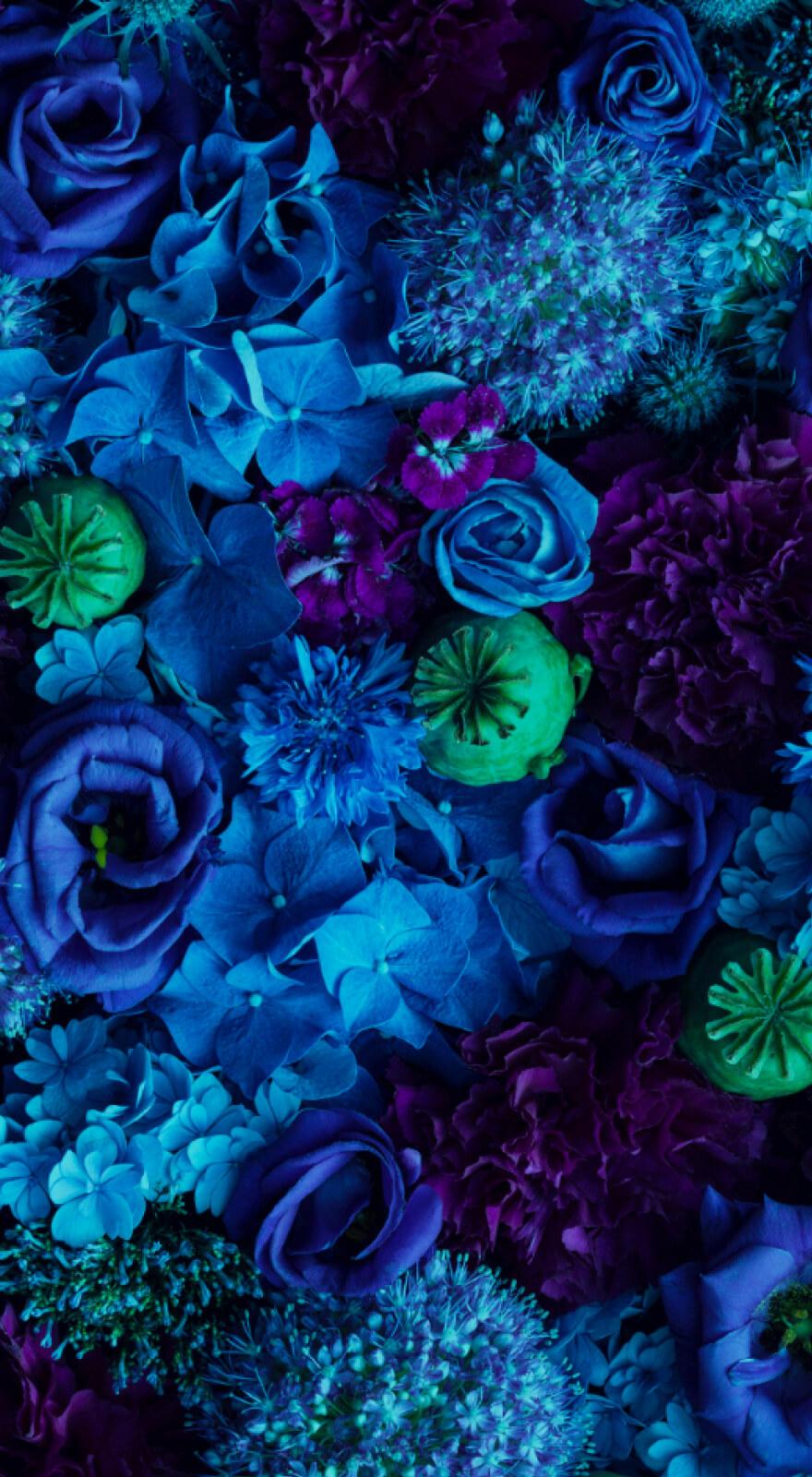Knowde Enhanced TDS
Identification & Functionality
- INCI Name
- Ingredient Origin
- Cosmetic Ingredients Functions
- Technologies
- Product Families
- Form
- Cells as a Powder (100%)
Features & Benefits
- Benefit Claims
- Labeling Claims
- The Chinese Peony a Famous Symbol for Peace and Prosperity
The peony is a species so famous in China that many events are organized to celebrate this flower in all the country when it is blooming: exhibitions, meetings, etc. Born in Central and Eastern Asia it is a herbaceous plant that grows slowly in woods and meadows but that has been cultivated in many Chinese areas since the Sui’s dynasty in the 6th century. Those emperors exhibited peonies in their gardens to anybody in the country. The traditional Chinese medicine considers that it has so many properties - its roots - that it is one of the most used medicine plants in China. Imported in Europe at the end of the 18th century, it has become an ornamental plant very popular till nowadays thanks to its many cultivars.
- Key Points
An active plant cell
Developed to deliver the highest amount of original active molecules.A high tech natural ingredient
Created to preserve and improve the identity and the benefits of a natural product.A general balancing action
For oily skins and unbalanced skinsBecause the nature of oily skins is an original unbalance with many consequences, it is necessary to act on several levels with respect of essential skin mechanisms. To get a purified, soothed tone more uniform and radiant.
- Products Benefits Rebalancing
Mattifying
Decreases the tone shining by a deep action on a key enzyme in the epidermis cells.Radiance
Helps skin to get a tone more radiant, by detoxifiing and oxygenating skin cells.Moisturizing
Keeps water in the epidermis, stimulates NMF levels and the quality of the hydrolipid film in the corneous layer.Soothing & relaxing
Calming, decreases irritations by increasing the level of skin tolerance.To be used in skincare or make-up products such as cream, fluid, serum, balm, lotion, milk, foundation, concealer, etc. In any cosmetic or skincare product dedicated to balance oily skins.
Applications & Uses
- Markets
- Color Cosmetic Applications
- Skin Care Applications
- Use Level
- Starting at 0.1%
- How it Works
Pure Light Chinese peony: regulating the main processes involved in skins with hyper seborrhea
Pure Light Chinese peony acts on different levels of epidermis before and after the phenomena of sebum surproduction by the sebaceous glands. First, it limits the quantity of the enzyme 5 alpha-reductase, which is at the origin of the activity of the hormon responsible for the production of sebum. To avoid the desquamation of the epidermis in its surface, it reinforces the water circuit and the water storing in the epidermis. At last, it limits the release of IL-6, the inflammation mediator and the substance P, a neuropeptide, that appear when sebum is produced, and, it improves cell respiration, that induces the elimination of toxins.
Thanks to those actions, skin gets back its balance and its function: the general protection of body.
Properties
- Dispersible in
- Most cosmetic formulations
Regulatory & Compliance
- Certifications & Compliance
Technical Details & Test Data
- Clinical Study
Mattifying effect until 6 hours - single application - and after 56 days - daily use
Assesment of the Matifying Effect by Gloss Measurment (Mean Value of Gloss Degree)
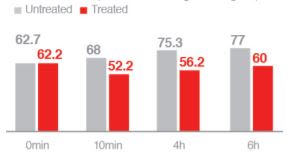
Decrease of gloss degree by 22% after 6 hours
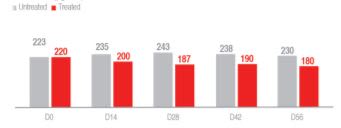
Decrease of sebum level by 22% after 56 days
Moisturizing effect after 28 days - application once a day
Average Data of Cornoemetric Values
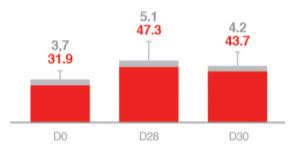
Increase of corneometric values by 48% after 28 days
Study Conditions
Study made on 25 women from 20 to 65 years old with oily skin. Sebum assessment higher or equal to 180μg/cm2 - face. Hydration assesment by corneometric values - face Emulsion with 0.1% of Pure Light Chinese peony (powder).- In Vitro Testing Results
Study of the Production of sebum
Oily skins or with acne look often shiny, that modify tone skin. That shiny aspect shows a hyperseborrhea, meaning an immoderate production of sebum. Sebum is made of sebaceous cells produced by sebaceous glands located especially at the level of scalp and in the middle of the face: at the end of maturation, these cells disintegrate and release their lipidic content, sebum, that comes to the surface of skin by climbing along the hair in the sebaceous hairy canal. The activity of the sebaceous gland is controlled by sexual hormons, androgens from ovarian or testicle origin, especially testosterone. In sebocyte, that hormon is transformed by the enzyme 5 alpha-reductase in dihydrotestosterone (DHT). At the end of other reactions, there is a sebum production. Therefore hyperseborrhea is due to either an exagerated secretion of androgene, or an hyper activity of the 5 alpha-reductase. Naolys decided to study the activity of that enzyme.
Study of the 5 alpha-reductase
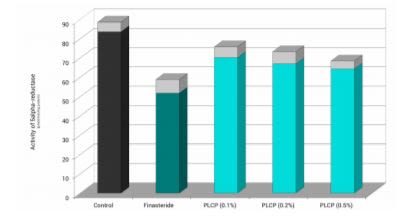
Decrease of 5 alpha reductase
At concentrations of 0.1%; 0.2% and 0.5%, there is a significant inhibition of the 5 alpha-reductase respectively by 16%, 20% and 23% compared with finasteride, a famous inhibor of 5 alpha-reductase (inducing an inhibition of 38%)
Study of cellular respiration
Cellular respiration is a redox chemical reaction which supplies energy to cells to grow and to function. Cells produce energy with glucides, as ATP through cell respiration. The activity of Pure Light Chinese peony on the cell and respiratory metabolism has been evaluated by the metabolization of glucose by the cells of the epidermis in hypoxia conditions. In vitro hypoxia conditions induce deep alterations of cell electromechanical functions, with an increase in the production of lactate, a fall in the quantity of ATP, ADP, and a loss of LDH. The reoxygenation of hypoxiated cells (a reversible state) normalizes the loss of lactate, induces a resynthesis of ATP and a reduction in the release of LDH. The decrease in superoxyde dismutase and glutathion peroxydase activity is reduced.
Study of cellular respiration in physiological conditions
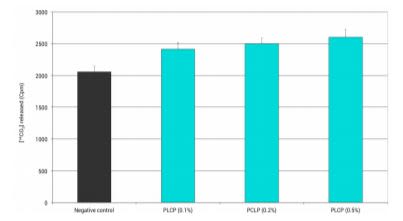
Increase of release of CO2
At concentrations of 0.1%; 0.2% and 0.5%, increase of the release of CO2 respectively by 17%, 22% and 26%Study of cellular respiration in asphixia conditions
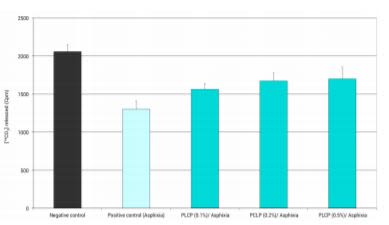
Increase of release of CO2
At concentrations of 0.1%; 0.2% and 0.5%, increase of the release of CO2 respectively by 20%, 28% and 31%- Study of Skin Hydration
Skin contains between 60% to 80% water according to age; stratum corneum contains 13% to 15%. Skin is considered as hydrated when that percentage goes beyond 10%, and dehydrated when the percentage is below 10%, stratum corneum becomes rough, flaking and loses its integrity. Most water is actually in the dermis thanks to proteoglycans that are fixed to big quantities of water.
Therefore there are 2 types of water in the epidermis:
A static water, that can’t move, located in stratum corneum, or called ‘‘water linked to corneocytes’’ thanks to the NMF (Natural Moisturizing Factor) and between corneocytes, where water is trapped by lipids, especially ceramides, that are located in the hydrolipidic film (cf. cell renewal). It gives elasticity and suppleness to skin. A dynamic water that moves, circulates from the dermis to the several layers of the epidermis, called also transepidermic flux. That water from the dermis is essential to the epidermis nutrition for the nutrients it brings. It helps to protection and homeostasis in the epidermis.Water follows a path from beneath the skin to its surface, when it arrives at the surface, the water evaporates. This occurs at a rate of about 5g water/m2/hour. The evaporation of water is from 300 to 500 ml/24 hours, and its main obstacle is the skin barrier, as its integrity should be perfect (cf. cell renewal). This depends on external factors such as temperature, humidity, and internal factors, such as the state of stratum corneum, the water gradient in the different layers of the epidermis and the integrity of the lipidic network between corneocytes. It doesn’t depend from the quantity of static water in the stratum corneum.
As hydratation state depends on the value of the transepidermic flux, on the balance between diffusion and evaporation, and the ability of stratum corneum to be fixed with water, Naolys studied both the action of Pure Light Chinese peony on dynamic water and on static water in the epidermis.
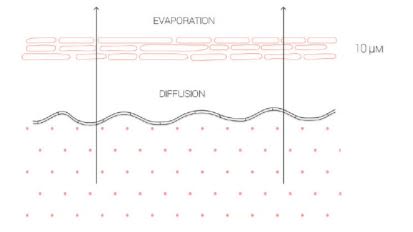
Water migration through skin
Study of static water - epidermis

Increase of water retention
At concentration of 0.1%, increase of water retention in dehydrated epidermis by 28% at T0+15 min, and by 33% at T0+30 min
Study of dynamic water - epidermis
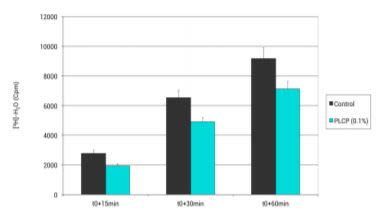
Decrease of transepidermic tritiated water
At concentration of 0.1%, decrease of the transepidermic tritiated water by 30% at T0+15min, by 25% at T0+30 min and by 22% at T0+60 min,
- Study of Inflammation
Study of an inflammation mediator
The inflammation is the answer of tissues to aggressions: all defense mechanisms through which they recognize, destroy and eliminate any foreign substances. Different types of cells take part in those mechanisms but in the epidermis, it is the
keratinocytes we will study. The beginning of inflammation, its diffusion starting from the initial location involve chemical factors that are locally synthetized or at the state of inactive precursors.
IL-6 is a pro-inflammatory cytokine, that regulates activation, growth and differentiation of lymphocytes. It belongs to the group of proteins that direct to the secretion of anti bodies to fight against extra-cellular pathogens.Study of IL-6
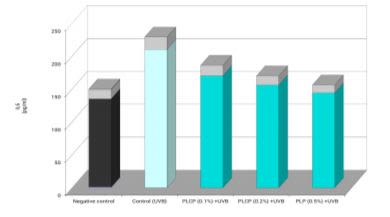
Decrease of IL-6
At concentrations of 0.1%; 0.2% and 0.5%, decrease of IL-6 respectiveley by 19%, 26% and 31%Study of neuro-inflammation
One of inflammation types is called nociception: it means that the information transportation will be made by nerves from the peripheral area to the encephalon. That transmission starts with free sensitive nerve endings (called nociceptors) very fines, with a diameter of less than 5 microns, found in skin, muscles and articulations. At the skin level their repartition is homogeneous, going until around eyelashes.When stimulated by thermal, mechanical or chemical factors, they will attach molecules released by hurt tissues, but they also produce molecules, like the substance P, produced in their collaterals in the periphery, meaning towards the areas close to the trauma. Naolys chose to study the syhthesis of the substance P, because, among peptides involved in the transmision of the pain signal, it is the most well known, as it was the first discovered. It has a vasodilator action.
Study of substance P - receptor
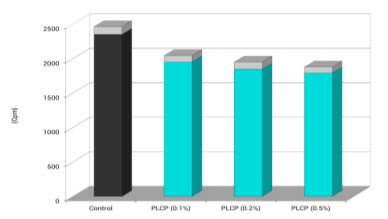
Decrease of the fixing of the substance P
At concentrations of 0.1%; 0.2% and 0.5%, decrease of the fixing of the substance P on its receptor, respectively by 17% 21% and 24%Study of substance P - release

Decrease of the release of the substance P
At concentrations of 0.1%; 0.2% and 0.5%, at the level of cellular cultures, decrease of the release of the substance P respectively by 20%, 25% and 29%
Packaging & Availability
- Regional Availability
